 To me, there is something about the pleasure of listening to radio that is intrinsically linked to a discrete box that is a radio, and the PC experience does not quite match up, but the chance to tune into thousands of radio stations from the four corners of the world is something that excited me.
To me, there is something about the pleasure of listening to radio that is intrinsically linked to a discrete box that is a radio, and the PC experience does not quite match up, but the chance to tune into thousands of radio stations from the four corners of the world is something that excited me.
Over the last few weeks I have had the chance to use one of those new fangled Wi-Fi radios – the Acoustic Energy AE17 16B. I hoped it would deliver the best of both worlds. It looks like a radio, but when you fire it up on your wireless network, it gives you a window on that plethora of choice that the Internet has given to listeners of online radio stations.
The idea is that you ‘turn on’ the AE and pick either from one of ten pre-set stations, choose geographically, down to country level or from one of a range of genres that includes my own favourites, 70’s and Comedy.
After spending time listening around the world, my top channel so far is RTHK, which coming in strong from the other side of the world, instantly takes me back to happy days in Hong Kong with Lynx Disco Classics to remind me of my time in a few dodgy 70’s discos.
Audio quality is dependent on what the station pumps out to the Web. Virgin offers a respectable 128kbp/s, the same as you’ll hear on a DAB radio, while BBC Radio 4, which is mainly talk, seems to just about remain acceptable down to about 40kbp/s. You can listen to this audio either through the radios adequate built in speaker, or via the provided headphone socket.
Listening to channels isn’t always a dream. Rather annoyingly, there seem to be various conditions that drive the tastefully designed box to silence and a buffering message on the radios’ LCD display. This shows the potential problems of a producer of hardware that listen to Internet radio station – as you can’t reply on the delivery of the audio streams, listeners will blame the device.
The Wi-Fi radios get their channel lookup list from a Reciva gateway on the Internet, which keeps a record of the stations available and if you know of a station that’s not there, you can fill out the details online at the Web site at reciva.com.
As well as letting you navigate to on-demand content, the radio has a useful feature allowing you to access mp3 tunes stored on your PC, but I’ll be straight with you, I’ve not managed to work out exactly how to do that as yet. I will persevere, but like some of the features on the radio, it’s not intuitive or easy to use.
Summary
While it does perform well once it’s running, there is a problem with getting to that point.
Although the AE looks simple enough, with just a mains power supply to plug in and a headphone socket, it’s not something to confront a technophobe with. There’s a maze of pull down menus and you’ll need to put on your anorak to enter a hexadecimal address or two if your network is a secure one.
I really wanted to like this, so I’m afraid this is only a middling 49% on the score sheet until a more simple interface is developed. Currently this is a Christmas present for the geek in the family not your ageing maiden aunt.
Overall 49%
Acoustic Energy WiFi Radio
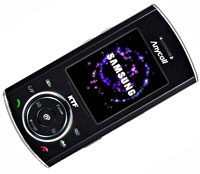 Fresh out of Samsung’s hyperactive phone production line in Korea is the new Anycall SPH-B5800 DMB phone.
Fresh out of Samsung’s hyperactive phone production line in Korea is the new Anycall SPH-B5800 DMB phone.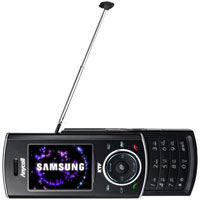 For music fans, there’s a built-in MP3 player with a microSD (TransFlash) port offering expansion options.
For music fans, there’s a built-in MP3 player with a microSD (TransFlash) port offering expansion options.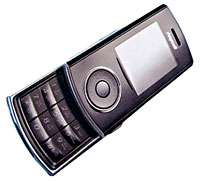 Sadly, there’s no news of a UK release, with the phone currently only available on the KTF network in Korea.
Sadly, there’s no news of a UK release, with the phone currently only available on the KTF network in Korea.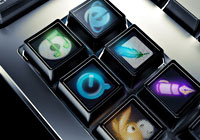 Rarely have we lusted for a new gizmo more than when we saw the promotional shots of the luscious Optimus keyboard last year.
Rarely have we lusted for a new gizmo more than when we saw the promotional shots of the luscious Optimus keyboard last year.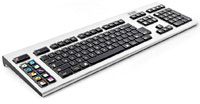 But just when we thought there was nothing left to improve on our current wireless Logitech mouse/keyboard combo with Lord-knows-how-many keys, buttons and control wheels (most unused), we clapped our eyes on the Optimus keyboard and thought we’d found keyboard heaven.
But just when we thought there was nothing left to improve on our current wireless Logitech mouse/keyboard combo with Lord-knows-how-many keys, buttons and control wheels (most unused), we clapped our eyes on the Optimus keyboard and thought we’d found keyboard heaven. Months went by with no release date being announced and some began to suspect we’d been bedazzled by a (particularly stylish) example of vapourware.
Months went by with no release date being announced and some began to suspect we’d been bedazzled by a (particularly stylish) example of vapourware. The response from their patient and loyal fans was immediate, with a chorus of posts on the
The response from their patient and loyal fans was immediate, with a chorus of posts on the 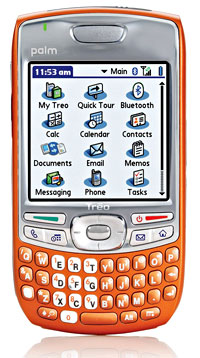 Palm’s update to its well-received and long running Treo 650 smartphone goes on sale in the UK.
Palm’s update to its well-received and long running Treo 650 smartphone goes on sale in the UK.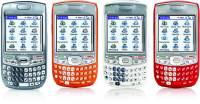 The Treo 680 also comes with beefed up Radio Frequency (RF) sensitivity for improved phone performance, a SD/MMC/SDIO-compatible expansion card interface and upgraded Bluetooth 1.2 connectivity.
The Treo 680 also comes with beefed up Radio Frequency (RF) sensitivity for improved phone performance, a SD/MMC/SDIO-compatible expansion card interface and upgraded Bluetooth 1.2 connectivity.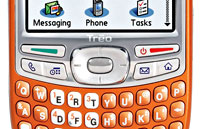 As with the Treo 650, the new phone offers the usual cornucopia of functionality and features including email, web browsing (via Blazer 4.5), the excellent Pocket Tunes music player, calendar, video, photo album and Documents To Go letting users view, edit and share Word and Excel documents on the move.
As with the Treo 650, the new phone offers the usual cornucopia of functionality and features including email, web browsing (via Blazer 4.5), the excellent Pocket Tunes music player, calendar, video, photo album and Documents To Go letting users view, edit and share Word and Excel documents on the move.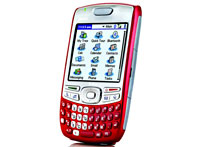 The product is available from today at the Palm e-store (US only) in red, orange, white and silver for £299 (contract free), although we’ve already seen discounted prices popping up elsewhere.
The product is available from today at the Palm e-store (US only) in red, orange, white and silver for £299 (contract free), although we’ve already seen discounted prices popping up elsewhere.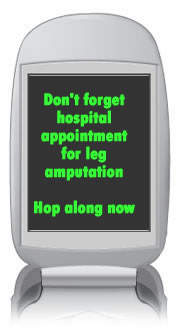 For a long time Health Authorities have been having kittens about the amount of people who miss their hospital appointments – and quite rightly, it’s a tremendous waste of resources, that are already stretched.
For a long time Health Authorities have been having kittens about the amount of people who miss their hospital appointments – and quite rightly, it’s a tremendous waste of resources, that are already stretched. It’s not just appointments that can be handled, Orange tell us that, “Among many benefits, text messaging prompts a better response to health promotion campaigns such as invitations to receive flu jabs or attend asthma clinics.” The word promotion could be worrying if abused.
It’s not just appointments that can be handled, Orange tell us that, “Among many benefits, text messaging prompts a better response to health promotion campaigns such as invitations to receive flu jabs or attend asthma clinics.” The word promotion could be worrying if abused.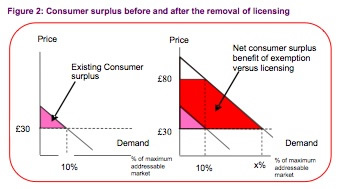
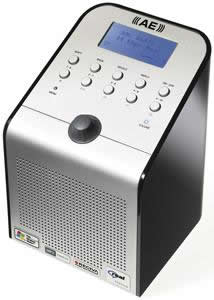 To me, there is something about the pleasure of listening to radio that is intrinsically linked to a discrete box that is a radio, and the PC experience does not quite match up, but the chance to tune into thousands of radio stations from the four corners of the world is something that excited me.
To me, there is something about the pleasure of listening to radio that is intrinsically linked to a discrete box that is a radio, and the PC experience does not quite match up, but the chance to tune into thousands of radio stations from the four corners of the world is something that excited me.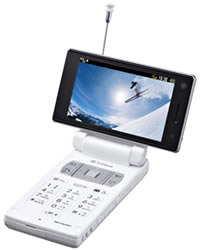 Like a hungry child with its drooling face depositing dribble all over the cake shop window, we’re only able to gaze at the sleek lines of Sharp’s swanky new 911SH TV phone from afar as the Japanese giant has announced that it’s for their home market only.
Like a hungry child with its drooling face depositing dribble all over the cake shop window, we’re only able to gaze at the sleek lines of Sharp’s swanky new 911SH TV phone from afar as the Japanese giant has announced that it’s for their home market only.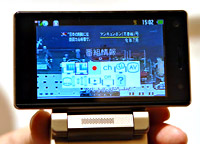 Slapping in a 1 GB card would deliver a mighty 4 hours of recording, although we’re not sure how long the battery would fare when playing back videos.
Slapping in a 1 GB card would deliver a mighty 4 hours of recording, although we’re not sure how long the battery would fare when playing back videos. Smartphone unit sales are soaring, with sales almost tripling between 2004 and 2005, and increasing a further 50% in the first half of 2006 compared to the previous year.
Smartphone unit sales are soaring, with sales almost tripling between 2004 and 2005, and increasing a further 50% in the first half of 2006 compared to the previous year.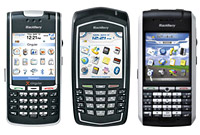 Despite the spectacular sales, Hughes advised caution, pointing out that many smartphone users continue to lug around the very devices that smartphones are supposed to replace.
Despite the spectacular sales, Hughes advised caution, pointing out that many smartphone users continue to lug around the very devices that smartphones are supposed to replace.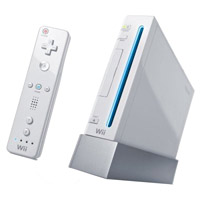 Nintendo’s eagerly awaited
Nintendo’s eagerly awaited 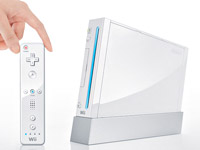 The first punter to get his hands on the shiny new console was the time-rich Isaiah Triforce Johnson, who had sat outside a New York store for more than a week.
The first punter to get his hands on the shiny new console was the time-rich Isaiah Triforce Johnson, who had sat outside a New York store for more than a week.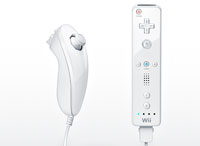 Sony had shipped 400,000 PlayStation 3s in North American stores at the end of last week, but Nintendo boasted that it would have “five to ten” times as many Wiis available at launch, with an end-of-year shipping figure of 4 million units expected.
Sony had shipped 400,000 PlayStation 3s in North American stores at the end of last week, but Nintendo boasted that it would have “five to ten” times as many Wiis available at launch, with an end-of-year shipping figure of 4 million units expected.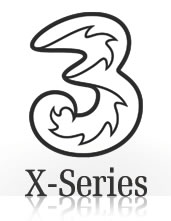 3 has seriously stepped up the offerings for providing services to mobile handsets. Their new service, X-Series, offers viewing of your own TV using
3 has seriously stepped up the offerings for providing services to mobile handsets. Their new service, X-Series, offers viewing of your own TV using 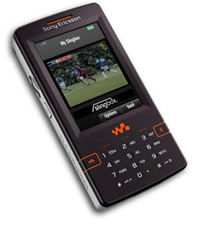 Comment
Comment There will be repercussions – not least from the TV companies who really don’t like the idea that people can watch their TV when they’re on the move. To be precise it’s the fact that they don’t make any money out of it, is the bit they don’t like.
There will be repercussions – not least from the TV companies who really don’t like the idea that people can watch their TV when they’re on the move. To be precise it’s the fact that they don’t make any money out of it, is the bit they don’t like.